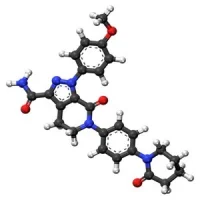Certain molecules – known as circulating microRNA – are associated with the recurrence of atrial fibrillation ("erratic heartbeats") in some patients after ablation therapy, according to new research presented at the American College of Cardiology's Scientific Session in Washington, D.C. These molecules could be used as screening tools to identify which patients will benefit from various therapies, explain researchers from the Intermountain Medical Center Heart Institute.
Circulating microRNA refers to microRNA that has spilled out of the cell into the blood and can be measured. MicroRNA is the name given to small, very stable non-coding RNA molecules that are involved in gene regulation.
"Our genetic makeup is important in how we respond and heal from procedures," said the study's senior investigator Dr. T. Jared Bunch. "MicroRNA particles are a direct result of our genetic make-up. As we try to identify treatments that are tailored to an individual person, microRNA has the promise to help us determine who may be a better candidate for ablation versus other therapies."
Ablation cures atrial fibrillation (AFib) in 60 to 70 percent of people, but for some, multiple procedures are required. Scarring and fibrosis outside of the veins that can involve both upper heart chambers often result in recurrences of AFib after an ablation.
In this study, researchers used a series of blood markers to identify those patients whose ablations worked the first time. They compared 85 patients who had successful ablations with 55 patients whose AFib recurred within a year. Low levels of three microRNA molecules – designated as 21, 150, and 328 – were found in patients whose AFib came back after ablation. Those molecules have already been associated with ablation's atrial scarring, called remodelling and adverse electrical healing.
Researchers hope the study findings will help doctors determine which treatments are more likely to work for different patients with atrial fibrillation, including those who wouldn't benefit from ablation, which is expensive and carries some risks.
Source: Intermountain Medical Center
Image Credit: Intermountain Medical Center
Latest Articles
atrial fibrillation, microRNA, ablation therapy, genetic makeup
Certain molecules – known as circulating microRNA – are associated with the recurrence of atrial fibrillation in some patients after ablation therapy, according to new research presented at the American College of Cardiology's Scientific Session in Washin










